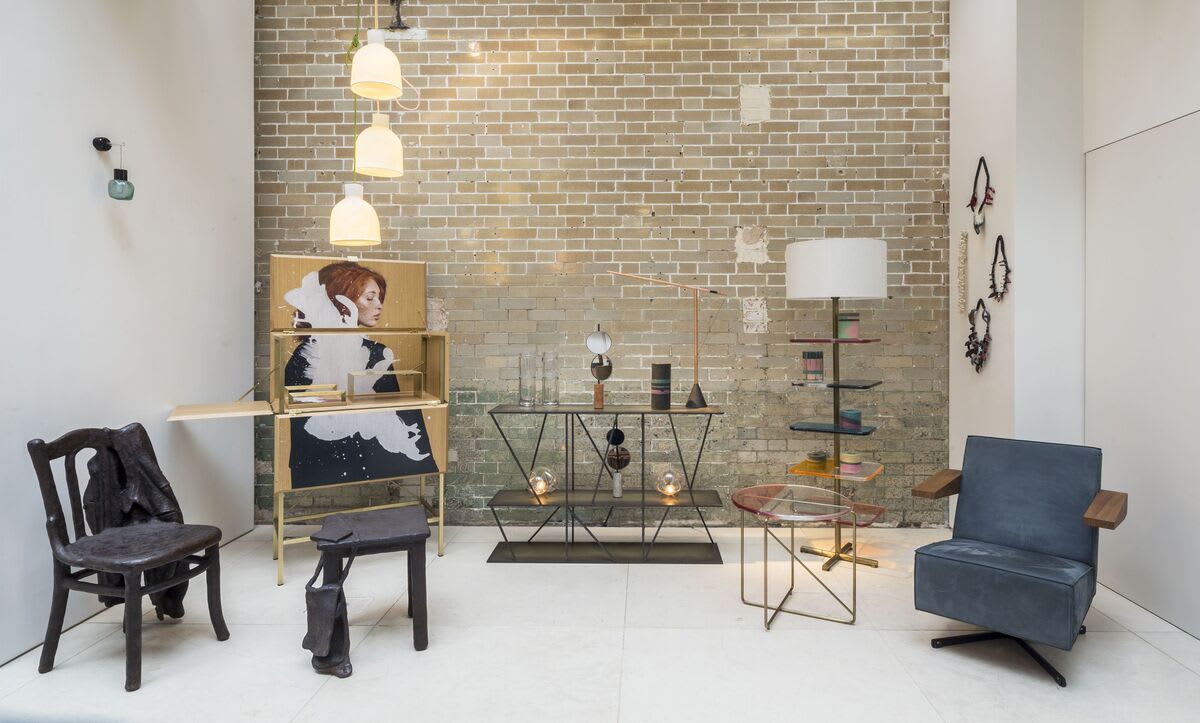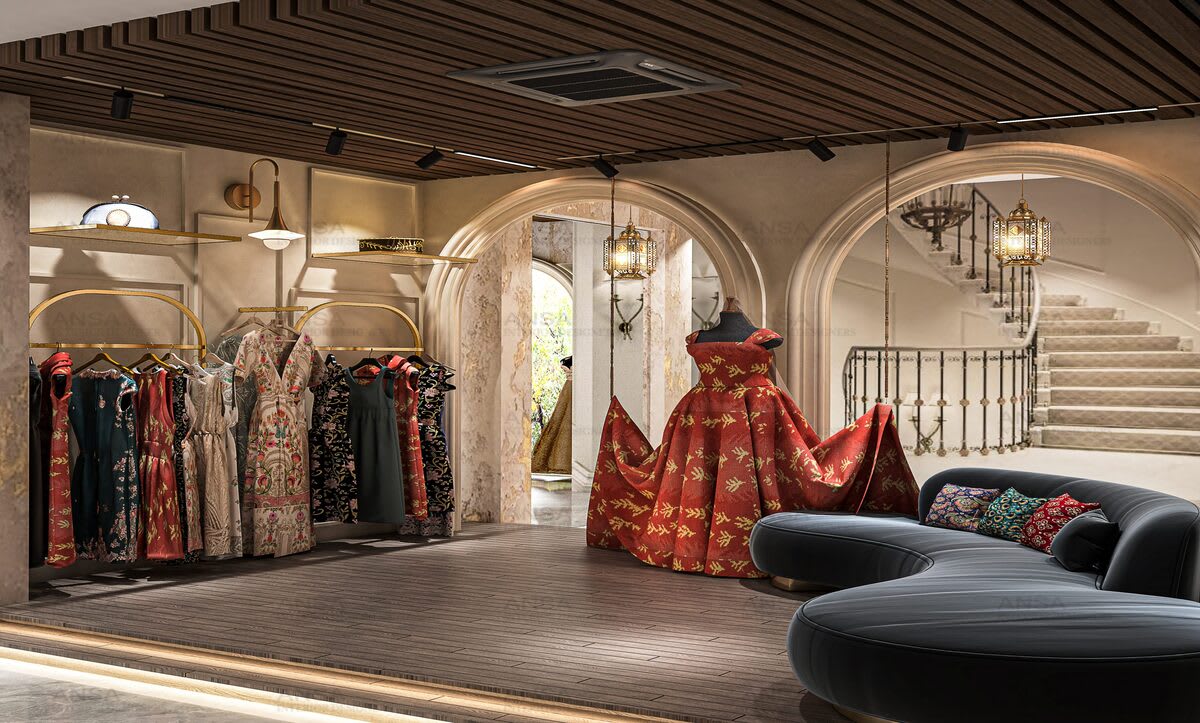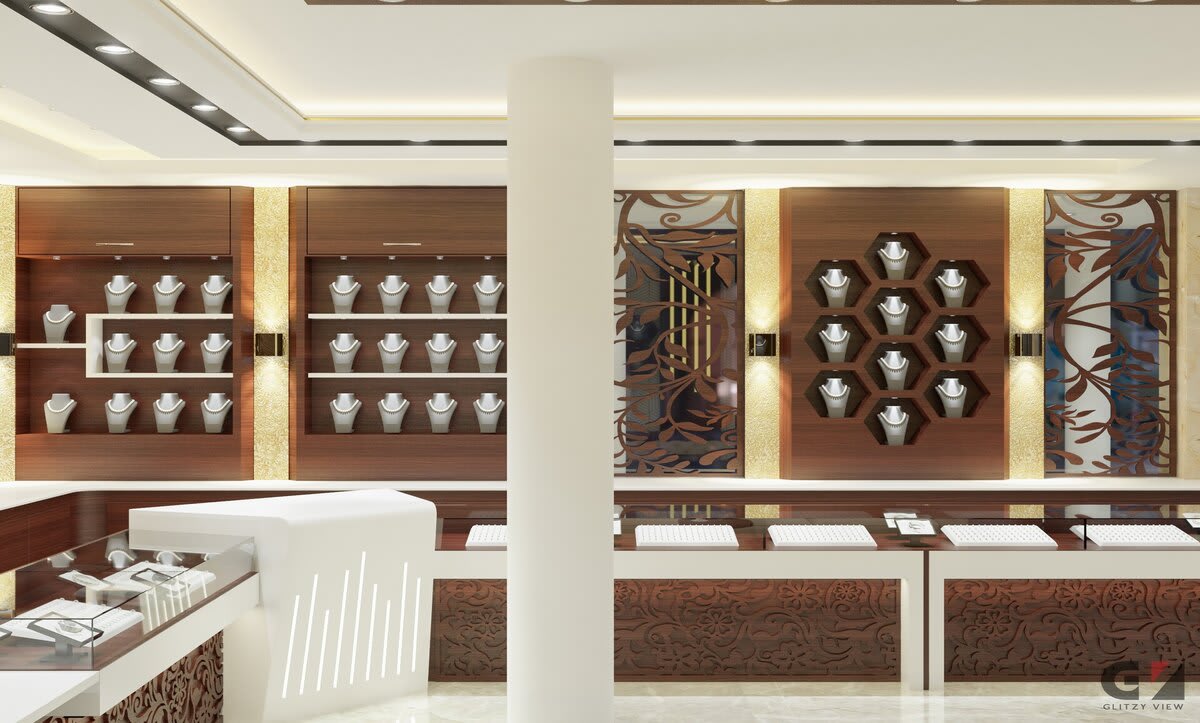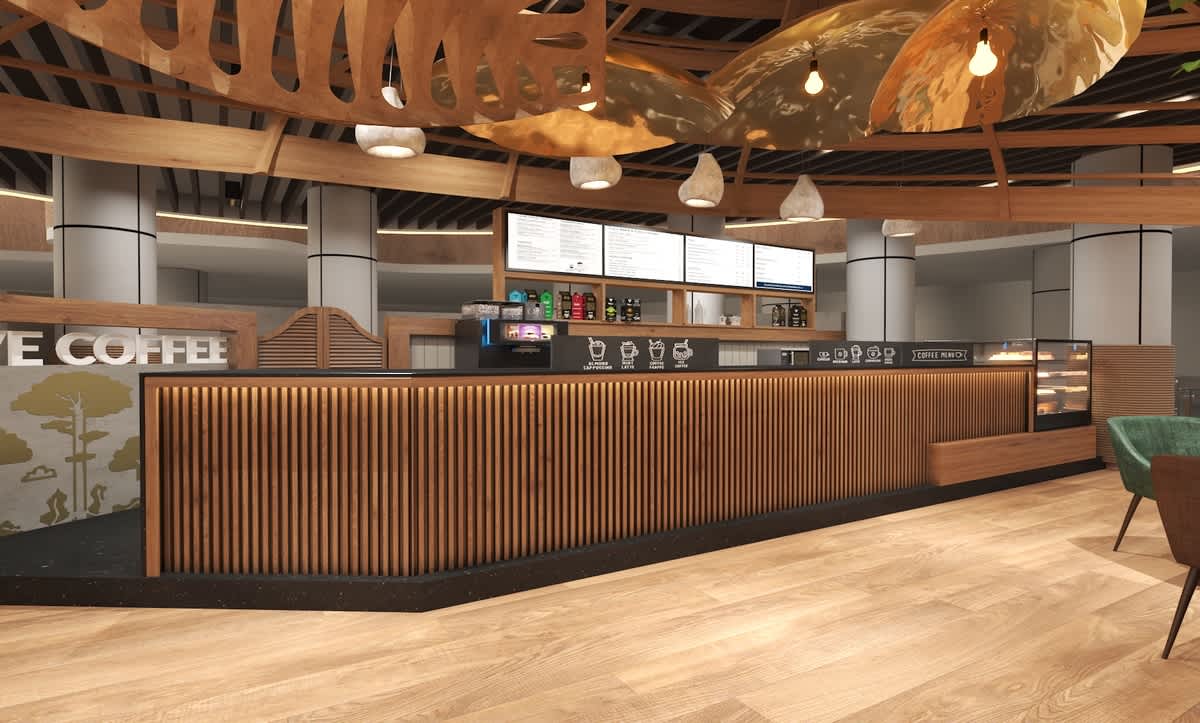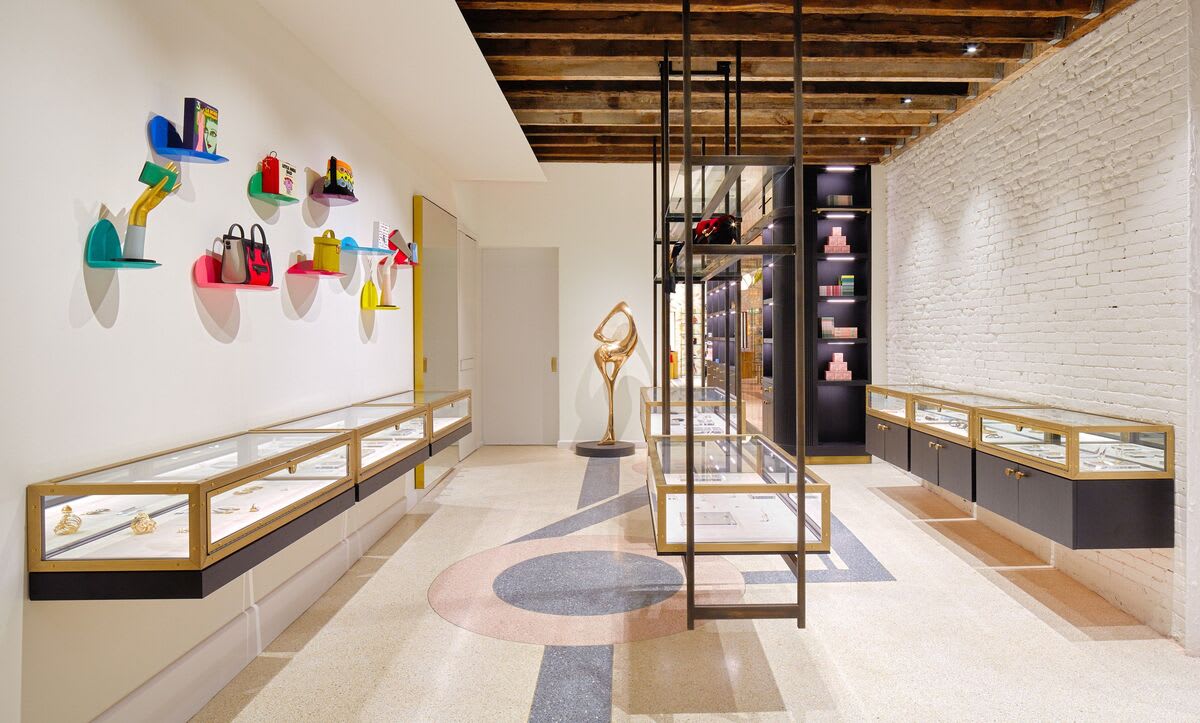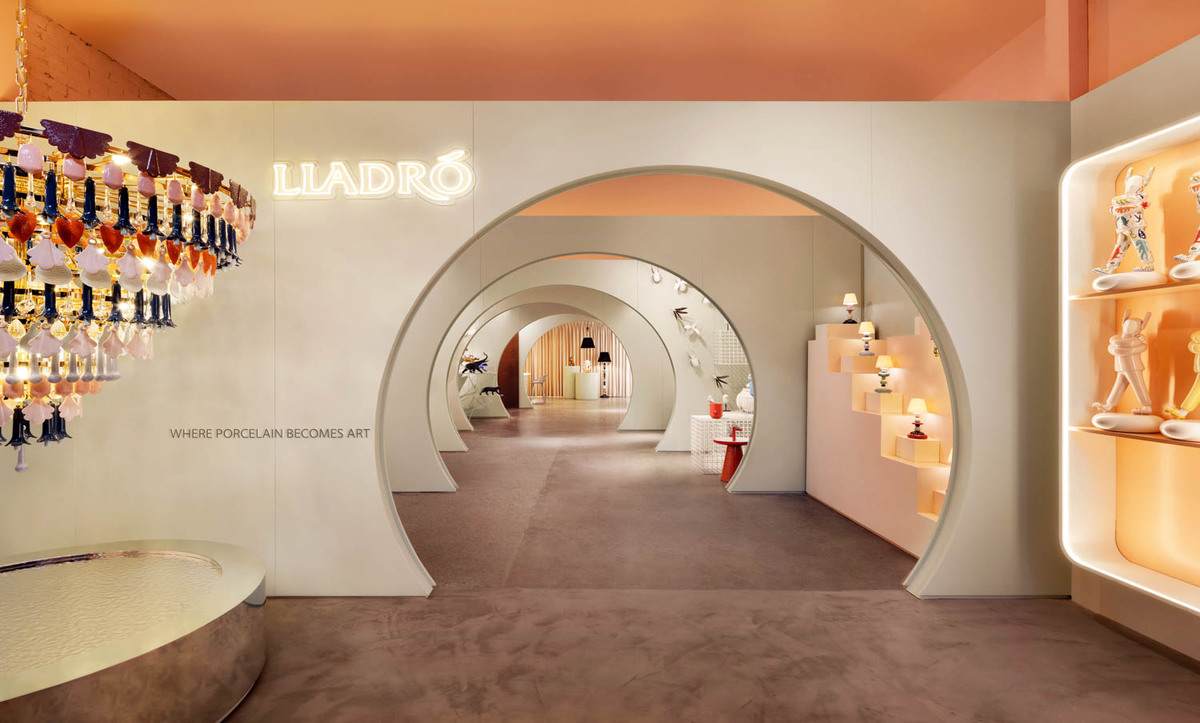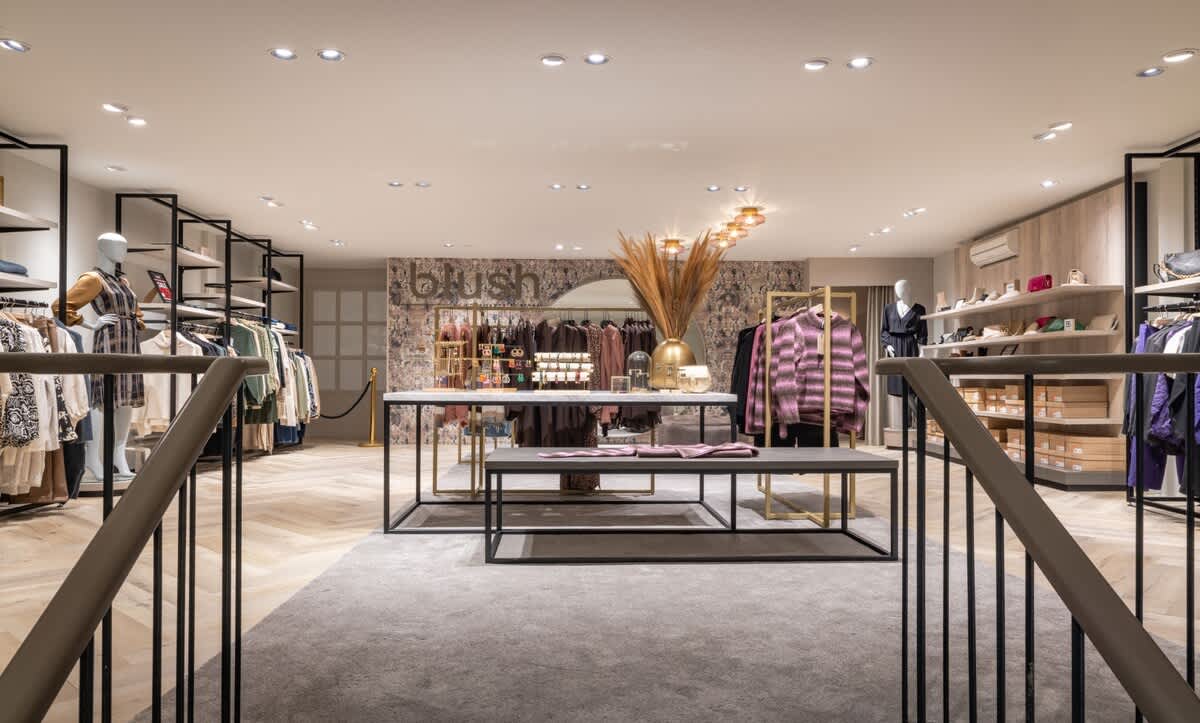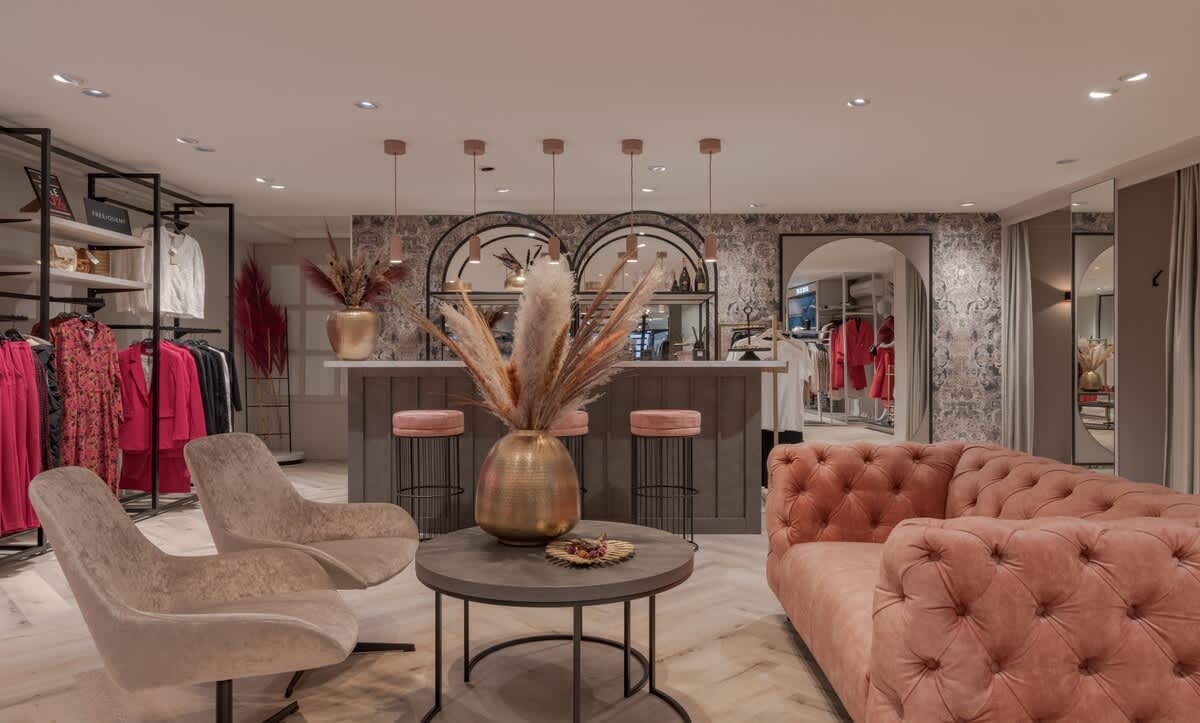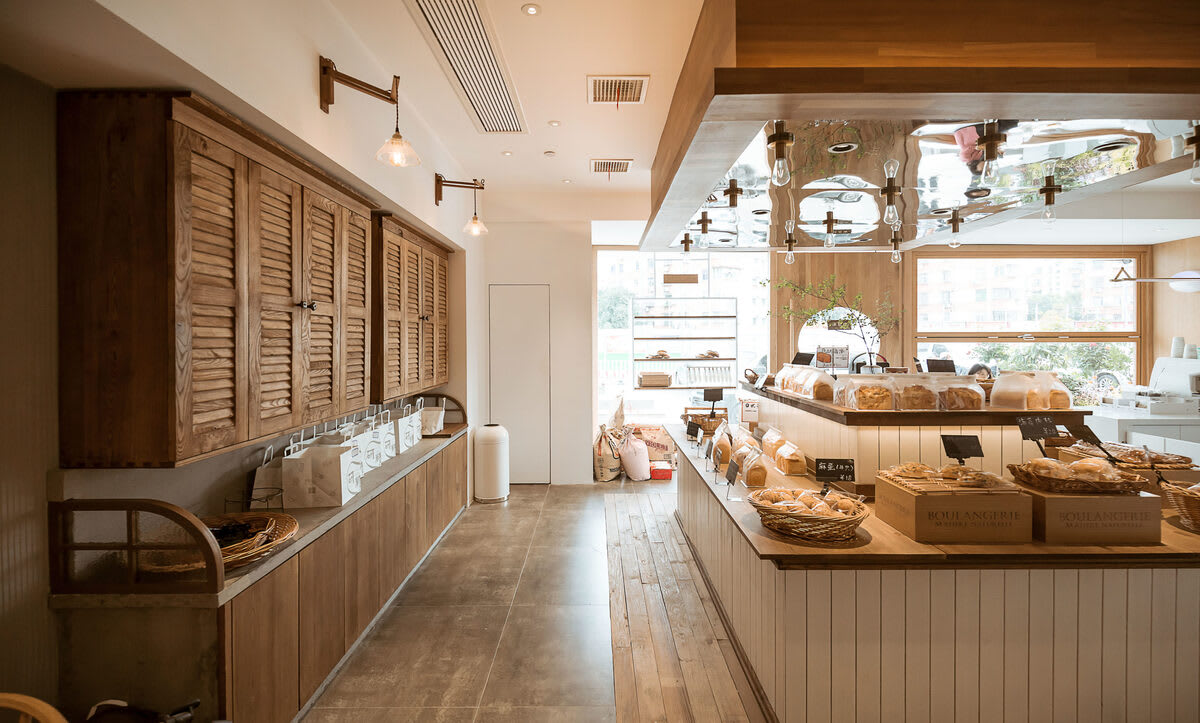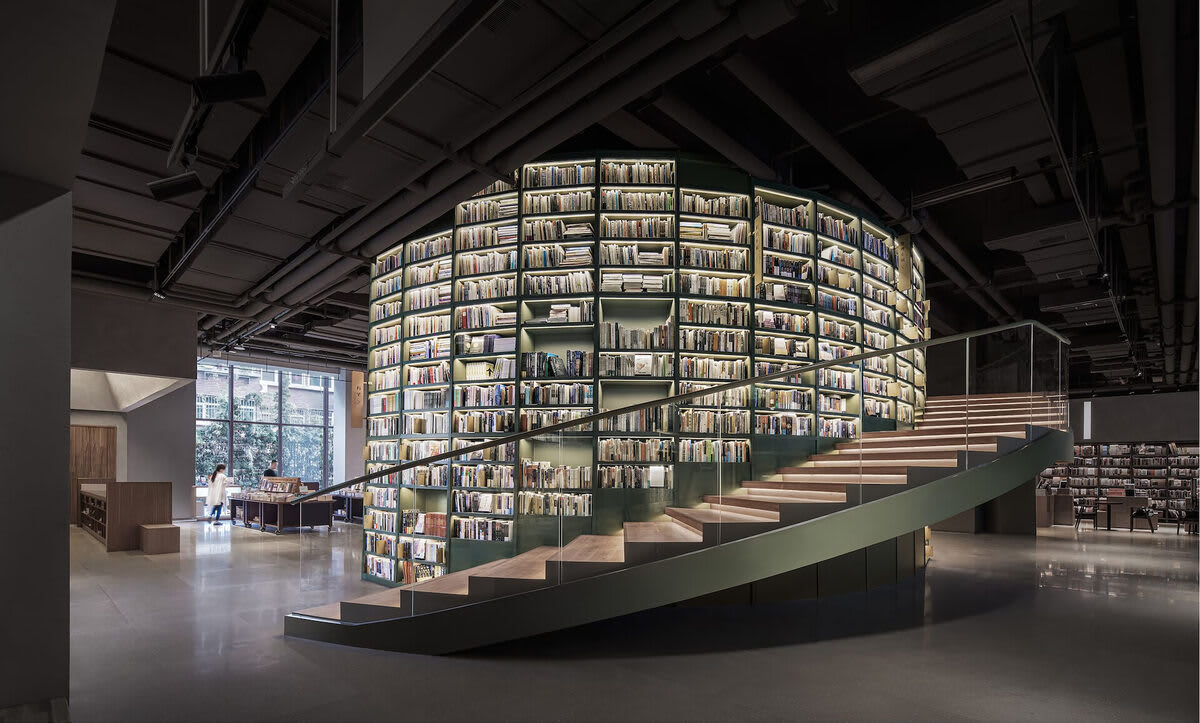Home Page | Blog | Shops Interior Design - Tips and Styles
Shops Interior Design - Tips and Styles
4/10/2025
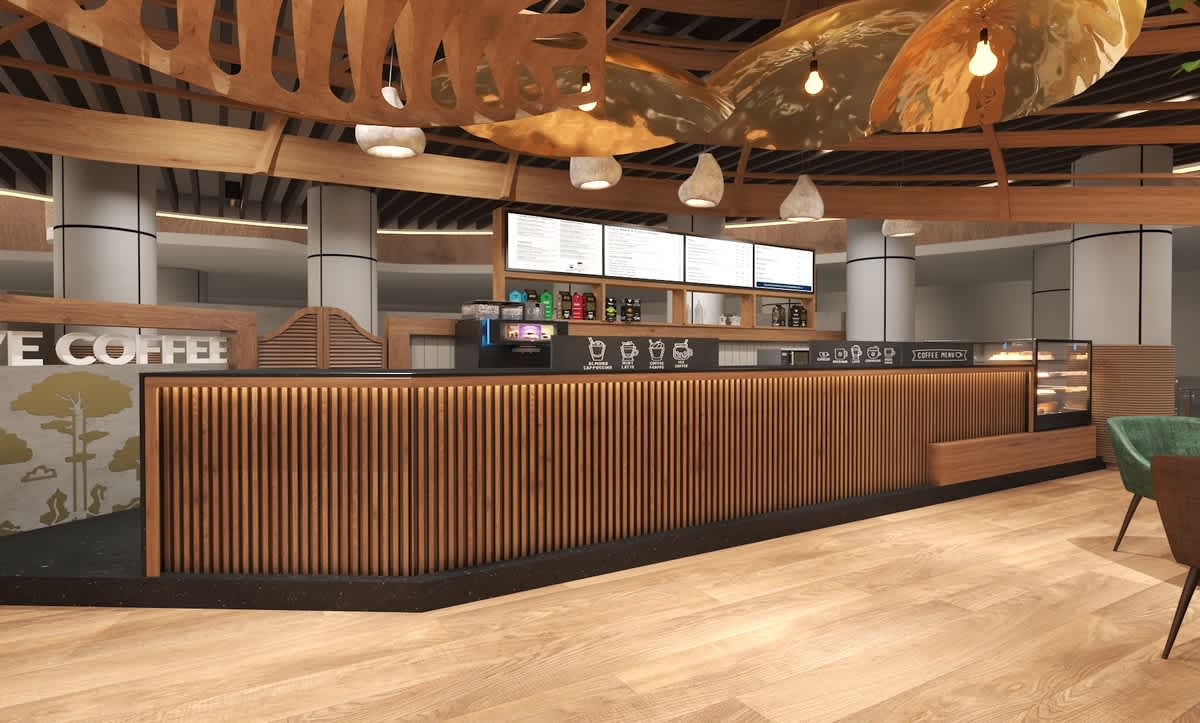
Retail environments influence customer behavior, purchasing decisions, and brand perception. The design of a shop contributes to how visitors move, what they notice, and how long they stay.
Strategic planning in layout, lighting, and materials supports business goals and improves the overall customer experience. Interior design in retail requires thoughtful integration of aesthetics and usability to support commercial performance.
1- Retail Starts With Atmosphere
A store does more than hold products. It sets a mood. It creates an experience before a single item is touched.
Design plays a silent but powerful role in shaping how people shop. Colors affect energy. Layout shapes movement. Texture sparks curiosity. A space that feels inviting keeps people inside longer. More time often means more purchases.
Whether a high-end boutique or a neighborhood grocery, a well-planned interior leaves a lasting impression. Shoppers remember how a place feels, even more than what it sells.
1.1. Fashion Boutiques
Boutiques carry more than clothes. They carry identity. From the moment a customer steps in, the vibe must feel intentional.
Spacious layout builds calm. Racks should feel like a gallery, not a warehouse. Clean sightlines, soft lighting, and comfortable pacing let customers browse without pressure.
Materials matter. Velvet curtains, matte walls, linen textures — these small touches influence perception. Lighting near mirrors should flatter, not distort. Fitting rooms deserve the same care as the shop floor.
Accent furniture adds personality. A vintage armchair or sculptural display invites pause. Every corner tells part of the brand’s story.
Seasonal changes in layout can keep the store fresh. Rotating displays near the entrance help start a new story every few months.
1.2. Grocery Stores
Supermarkets must balance function with atmosphere. People shop here weekly. The layout must feel intuitive.
A clear entrance view helps orientation. Produce at the front sets a fresh, natural tone. Wood crates or green walls can make even large stores feel grounded.
Lighting changes everything. Warmer tones near fruits and vegetables highlight freshness. Clean white light works better in aisles, offering clarity and balance.
Wide paths make space for carts and families. Displays should never interrupt flow. Impulse items near checkout can increase last-minute purchases — but only if placed thoughtfully.
Soft background music, clean floors, and neat signage create ease. Familiarity helps shoppers feel in control.
1.3. Tech Stores
Gadgets invite touch. Tech stores should feel like playgrounds for grown-ups.
Wide-open floors help people move freely. Products laid out on islands or long tables allow hands-on discovery. Signage must stay minimal. Too much text clutters the look and confuses buyers.
Cool white lighting pairs well with electronics. Devices need even lighting to show their true color and shine. Avoid harsh shadows. Reflective surfaces like glass or acrylic add polish.
Materials should feel modern. Metal accents, polished concrete, and sleek shelving create a clean backdrop. Pops of color in seating areas can prevent the space from feeling cold.
Interactive zones boost engagement. Screens that respond to touch. Headphones people can test. Smartwatches ready for demo. These invite longer visits.
Design should guide, not overwhelm. A tech store should feel clear, focused, and intuitive.
1.4. Concept Stores
Concept stores don’t just sell products. They sell mood, theme, or culture. Everything inside serves the bigger picture.
These shops often combine multiple zones — coffee, clothes, art, and books in one space. A well-planned layout separates yet connects each section. Movement feels natural, not forced.
Materials can be mixed freely. Concrete floors beside soft rugs. Exposed brick paired with glass dividers. It all depends on the story.
Lighting should shift by zone. Warmer areas near books or cafés, cooler tones near fashion or tech. Adjustable lighting adds flexibility for events or new themes.
Surprises make concept stores memorable. A reading nook in the back. A rotating art wall. A pop-up kitchen. These keep visitors curious.
In cities like Tokyo or Paris, concept stores double as creative studios. Dubai has joined this trend, too. Many brands now explore concept-style interior design in Dubai, UAE, blending local style with global trends.
2- Layout Drives Behavior
Shoppers follow patterns. Most turn right when entering. Smart design places high-margin items in this zone.
Long aisles can feel endless. Breaking them up with islands or cross-displays encourages discovery. Curves over corners create smoother flow.
Zoning matters. Different areas should feel distinct. Colors, lighting, and texture help define zones without physical barriers.
Rest areas support comfort. A bench near shoes. A coffee corner beside books. Small spaces like these extend visit time.
Circulation paths must remain open. Clutter slows movement and overwhelms the mind.
3- Lighting Sets Mood
More than visibility, lighting sets rhythm. Bright lights create energy. Soft lights invite calm. Every bulb carries emotional weight.
Spotlighting can draw focus. A statement wall. A featured product. Even a small corner becomes important under the right beam.
Avoid flicker. Quality lighting improves both comfort and trust. Customers stay longer when their eyes don’t strain.
Daylight adds warmth. Skylights or large windows open the space. For malls without sun access, well-placed ambient light mimics natural tones.
Smart lighting systems allow changes through the day. Morning feels bright. Evening winds down softly. These shifts mirror human rhythm.
4- Material Choices Reflect Brand
Stone adds depth. Metal adds structure. Wood adds comfort. Fabrics bring softness.
A luxury brand might choose marble, brass, and leather. An eco-conscious store may use reclaimed wood and organic cotton.
Texture invites touch. Shoppers interact more when materials feel good. Linen wall hangings. Ceramic tiles. Woven baskets. These choices stay in the subconscious.
Durability matters too. High-traffic areas need surfaces that last. But this never means boring. Industrial concrete can meet soft lighting for a beautiful contrast.
Brand tone should match materials. Consistency builds trust. Visuals and textures need to work together.
5- Sensory Design in Retail
Shoppers remember what they feel. This goes beyond sight.
Scent is powerful. A hint of citrus near skincare. Fresh bread near the bakery zone. Lavender near checkout. All of these create emotion.
Music sets pace. A slower tempo can increase browsing time. A faster beat boosts energy in clearance zones.
Temperature affects mood. A cool store in summer feels refreshing. A warm corner in winter feels like a haven.
Every sense plays a part. Design must consider all of them.
6- Regional Influence and Local Identity
Dubai stores bring global influence with local flair. Designers in the UAE draw from heritage while embracing new aesthetics.
Patterns inspired by Arabic geometry. Natural stone from regional sources. Subtle references to desert tones or palm textures.
Retail design in Dubai often blends modern minimalism with hospitality-inspired comfort. Space is used to welcome, not just display.
Retail in this region also reflects the city's fast-paced evolution. Concepts shift quickly. Interiors stay adaptable. Flexibility is built into every plan.
For any business looking to update, an interior design service helps bridge culture, customer needs, and spatial trends.
7- Digital Tools and Smart Interiors
Technology is now part of the design process. Interactive mirrors. Augmented reality testers. QR codes for more info.
Shops now plan layouts to include charging spots, Wi-Fi hubs, and screen zones. Interior designers work with tech experts to keep these additions seamless.
Even small stores benefit from digital touchpoints. A simple tablet stand or rotating screen display can add value.
Data also shapes future updates. Sensors track how people move. Heat maps show popular zones. This helps redesign with purpose.
Conclusion
Good design makes retail feel easy. A shop that flows well, lights beautifully, and feels right leaves a mark.
Customers may not remember every display. But they remember the experience. That memory drives return visits, brand loyalty, and stronger sales.
Every store has a story. The right design helps tell it — clearly, naturally, and in a way that people won’t forget.
Looking to refresh your retail space? Our team can help create a design that reflects your vision and connects with your customers. Explore our interior design service or reach out to learn how we bring retail spaces to life — in Dubai, across the UAE, and beyond.
FREE
CONSUL
TATION
FREE CONSULTATION
TELL US ABOUT YOUR PROJECT
WE WOULD LOVE TO HEAR FROM YOU
Feel free to reach us via this contact form and one of our Design Consultants will get back to you at earliest.
OUR BRANCHES
UAE - DUBAI
+971 52 8111106 | hello@algedra.ae
TURKEY - ISTANBUL
+90 533 701 89 71 | info@algedra.com.tr
Leading Interior Design and Decor Company in Dubai and Abu Dhabi.
Algedra is a reputable, internationally recognized, and one of the most successful interior design companies in Dubai, and Abu Dhabi, which specializes in delivering interior design, architectural, and creative space planning projects throughout GCC, MENA, North Africa, Turkey and Russia.
Algedra is a one-stop solution for all your residential interior design and fit-out needs. We have successfully completed numerous villa interior and exterior design projects, where we integrated quality and originality to deliver interior masterpieces.
ALGEDRA, Interior Design Company in Dubai, is specialized in providing elegant and stunning interior design services for both residential and commercial projects. We turn our clients' dreams into reality, trans- lating their tastes and needs into beautiful and functional spaces.
Since the day we were founded, we have designed and built many branded residences, resorts, hotels, multi-purpose social spaces, and palace designs with different functions and concepts by following the ever-changing design trends over the world.
A key element of our work is a fusion of different cultures and designs, combining Greek, Italian, Eastern and Western influences with British innovation.
As a team of highly qualified interior designers and engineers, Algedra offers complete architectural services from mall design to corporate office design as well as the exterior design of any project based on customers' needs.
Our customers include leading names, we have completed diverse projects in hospitality, landscape, commercial, and residential designs. These projects contain cafes, restaurants, gym, villas, family sitting rooms, bedrooms, kitchens; all showcasing our company's exquisite details and high-end designs.
Residential Interior Design in Dubai
Algedra's interior designers and architects have an important mission: building villas, houses, apartments, condos, and anywhere else where you reside that will fulfill your needs while being structurally safe and sound.
Architectural Designs
There are so many details that go into designing an architectural design project. Every step of the project has been carefully considered for safety and daily comfort by Algedra's experts.
Commercial Design
Conceptualizing spaces for business, to elevate style, and to increase functionality to help enhance the bottom line of a company is vital, as well as employee comfort and interior design too. Our commercial interior designers translate client's concept in ways that are efficient, attractive and provide professional workspaces.
Fit-out Projects
Algedra Interiors delivering high-quality tailored fit-out projects that transform your villas, palaces and commercial spaces.
We're a passionate team of interior designers, architects and engineers. Every day we help clients to solve interior design problems and create engaging spaces!
Wherever you are in Kuwait, Saudi Arabia, Azerbaijan, Qatar, Morocco, Algeria, Tunisia, Libya, Egypt; don't hesitate, contact us to find out more about why we are one of the best interior design companies in Dubai and Abu Dhabi!
